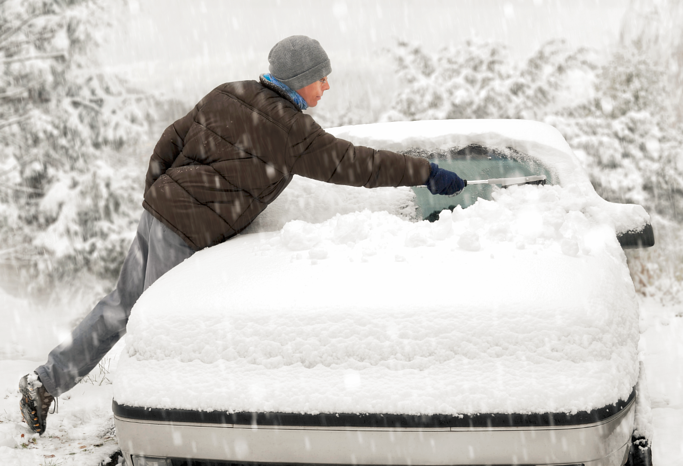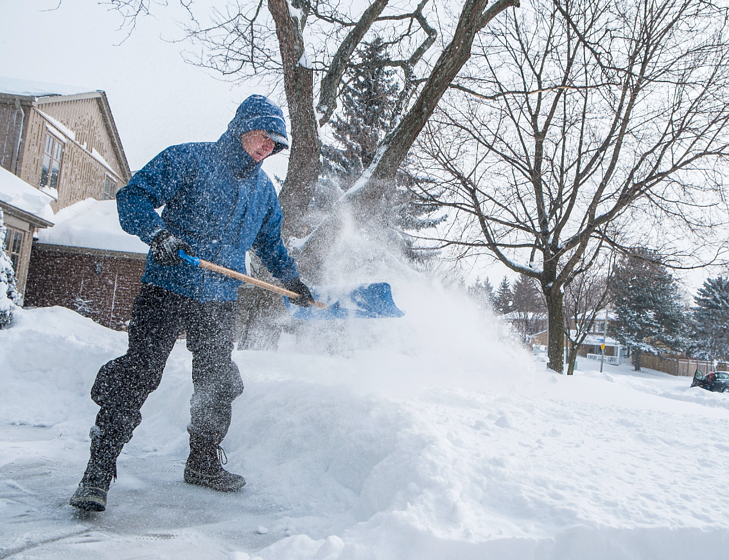
Every year, the advance of winter is marked not by the first snowfall, but by the first appearance of snow shovels in home improvement, hardware, and appliance stores. After all, anyone who lives in a snowy area knows you can barely get as far as your mailbox without shoveling a path first--unless, of course, you have an ingenious product in place that takes care of snow removal for you overnight...
Though it seems like a winter necessity, shoveling snow is a strenuous job that can affect your health. Bending over a shovel for long hours and lifting heavy piles of snow can significantly harm your body, especially your back. Luckily, there are some techniques you can employ to prevent these lower back shoveling injuries.
- Similar to all strenuous jobs, shoveling can put a lot of pressure on your body. It is therefore imperative that you pick an appropriate shovel that works with your body, such as an ergonomic snow shovel that can make the task easy. Additionally, a shovel that has an adjustable handle will reduce the need to bend or arch your back.
- Before you start shoveling, try a few warm up routines. The combination of the cold and tight muscles can increase the chance of injury. For instance, take a quick, ten minute walk, or do some light stretching exercises, like shoulder rolls, which will increase the rate of your blood circulation and loosen you up for the heavy lifting ahead.
- Use the correct lifting methods. Ensure that you face the pile of snow you want to lift; your body should be square and facing the snow. Bend your knees to avoid putting strain on your lower back. You should also raise your leg, straighten your back, and avoid straining your spine.
- When lifting the snow, hold the shovel with one hand close to the blade while retaining the other hand on the edge. Your back should not be twisted while shoveling and your body should move towards where you are taking the snow. The location that you are throwing the snow should be close to your body.
- Shovel slowly and lift only small quantities of snow at a time. Taking your time will reduce pressure on your lower back. If the pile is deep, start with the few inches at the top and avoid reaching for the snow at the bottom.
- Ensure that you check with your doctor before shoveling to avoid damaging your back. In addition, you should drink plenty of water and take breaks to reduce the pressure on your body. This will not only ensure that you are not overworked, but you can also use that opportunity to stretch your arms, back, and shoulders, keeping them warm and flexible.
- It is essential that you keep your feet on the ground while shoveling snow. Slippery conditions can cause slipping and/or falls in addition to the straining that can potentially injure your back. You will therefore want to invest in appropriate shoes and boots with good treads, which will assist you with minimizing injuries from slipping. You may also want to lay down a heated floor mat, which also provides tread, as well as an ice-free surface to stand on.
Following these shoveling guidelines will significantly reduce your chances of developing new back problems, or even aggravating your lower back pains while shoveling. This could enhance the quality of your winter experience, rendering it more enjoyable and healthier. However, if you are greatly concerned by the damage shoveling might cause to your body, you can just reduce the need for doing it frequently by utilizing an alternative snow removal technique for your home, such as heated floor mats.


